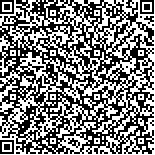| 引用本文: | 肖 炜,杨 弘,李大宇,罗永巨,邹芝英,祝璟琳.同种罗非鱼(Tilapia)不同地区选育群体的遗传多样性分析.海洋与湖沼,2010,41(4):530-537. |
| |
|
| |
|
|
| 本文已被:浏览 2219次 下载 2819次 |

码上扫一扫! |
|
|
| 同种罗非鱼(Tilapia)不同地区选育群体的遗传多样性分析 |
|
肖 炜1, 杨 弘1, 李大宇1, 罗永巨2, 邹芝英1, 祝璟琳1
|
|
1.中国水产科学研究院淡水渔业研究中心农业部淡水鱼类遗传育种和养殖生物学重点开放实验室;2.广西水产研究所
|
|
| 摘要: |
| 采用微卫星标记分析技术, 选用36 对微卫星引物对罗非鱼原始群体和引种群体进行遗传多样性分析, 原始群体为中国水产科学研究院淡水渔业研究中心保种的奥利亚罗非鱼(“夏奥1 号”,ZA)、埃及尼罗罗非鱼(“99 品系”, ZN), 引种群体为广西水产研究所从淡水渔业研究中心引进培育的奥利亚罗非鱼群体(GA)和埃及尼罗罗非鱼群体(GN)。结果显示19 对引物具备多态性, 比率为52.8%, ZA 与GA 两个群体的平均观测杂合度、平均期望杂合度、平均多态信息含量分别为0.10、0.15、0.12, 遗传相似性系数为0.9867, 平均近交系数(FST)与基因流(Nm)分别为0.0379、6.3408; 而ZN 与GN 两个群体平均观测杂合度、平均期望杂合度、平均多态信息含量分别为0.37、0.49、0.43,遗传相似性系数为0.7696, 平均近交系数(FST)与基因流(Nm)分别为0.1146、1.9309。分析结果表明:(1) 两个奥利亚群体中ZA 与GA 遗传多样性小, 群体间遗传距离小, 相似度较高, 选育出的奥利亚群体遗传结构相对稳定; (2) 两个尼罗群体中ZN 与GN 遗传多样性适中, 群体间存在一定的遗传距离, 相似度低, ZN 与GN 两个埃及尼罗群体具备进一步选育出新品系的潜力; (3) 基因座UNH896、UNH995、UNH999 可应用为鉴别奥利亚群体与埃及尼罗群体的特异性标记。
|
| 关键词: 奥利亚罗非鱼, 埃及尼罗罗非鱼, 微卫星, 遗传多样性 |
| DOI:10.11693/hyhz201004010010 |
| 分类号: |
| 基金项目:国家科技支撑计划, 2006BAD01A1202 号; 2007 年公益性行业(农业)科研专项, 3-49 号; 现代农业产业技术体系建设专项资金, nycytx-48 号; 中央级公益性科研院所基本科研业务费专项资金项目, 2007JBFA02 号。 |
附件 |
|
| GENETIC DIVERSITY ANALYSIS OF THE SAME SPECIES OF TILAPIA CULTURED IN DIFFERENT REGIONS |
|
XIAO Wei1, YANG Hong1, LI Da-Yu1, LUO Yong-Ju2, ZOU Zhi-Ying1, ZHU Jing-Lin1
|
|
1.Key Laboratory of Genetic Breeding and Aquaculture Biology of Freshwater Fishes, Ministry of Agriculture, Freshwater Fisheries Research Center, Chinese Academy of Fishery Sciences;2.Guangxi Institute of Fisheries
|
| Abstract: |
| Thirty-six pairs of microsatellite primers for Orechromis niloticus from GenBank were tested on four populations, including O. aureus (“Xia Ao 1 Hao”, ZA) and Egypt O. niloticus (“99 Series”, ZN), which were cultured in the Chinese Academy of Fishery Sciences Freshwater Fisheries Research Center, and other two populations (GA and GN), which was introduced and cultured in the Guangxi Institute of Fisheries. It was showed that 19 pairs (52.8%) display polymorphism. In the O. aureus populations, the average observed heterozygosity (Ho), expected heterozygosity (He) and polymorphism information content (PIC) were 0.10, 0.15, and 0.12, respectively; the genetic similarity between the two populations was 0.9867; the average inbreeding coefficient (FST) and gene flow (Nm) of ZA and GA were 0.0379 and 6.3408, respectively. In the Egypt O. niloticus populations, the average observed heterozygosity (Ho), expected heterozygosity (He) and polymorphism information content (PIC) were 0.37, 0.49, and 0.43, respectively; the genetic similarity within these two populations was 0.7696; the average inbreeding coefficient (FST) and gene flow (Nm) of ZN and GN were 0.1146 and 1.9309, respectively. The results showed that 1) In the two O. aureus populations, the genetic diversity was low, the similarity was high, and the genetic variation between the ZA and GA was low, indicating the information of O. niloticus populations were relatively stable; 2) In the two Egypt O. niloticus populations, the genetic diversity was moderate, the similarity was relative low, and the genetic distance between ZN and GN was relative high, indicating some genetic variation existed in the Egypt O. niloticus populations, and there was a certain degree of cultivation potential in these Egypt O. niloticus populations; 3) Primers UNH896, UNH995, and UNH999 could be used as unique microsatellites markers to distinguish O. aureus and O. niloticus.
|
| Key words: Orechromis aureus, Egypt O. niloticus, Microsatellites, Genetic diversity |
|
|
|
|
|
